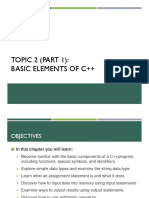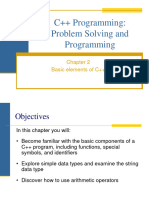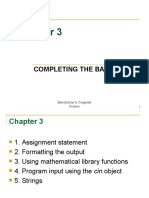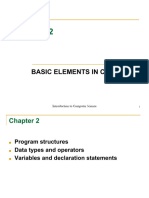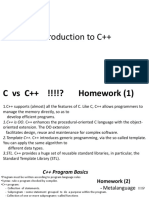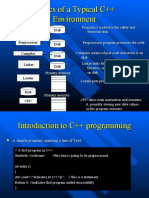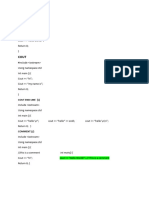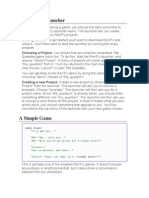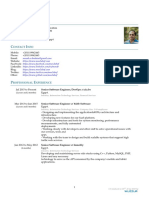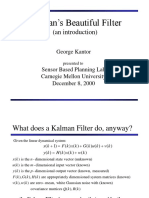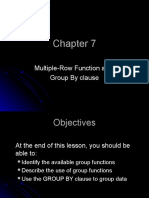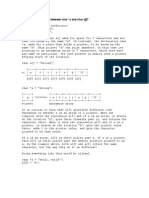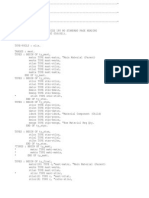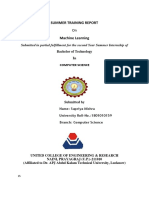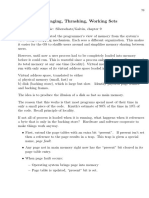0% found this document useful (0 votes)
6 views39 pagesLecture 2
The document outlines the fundamentals of C++ programming, covering topics such as comments, tokens, data types, operators, and memory allocation. It emphasizes the importance of clear coding practices and provides examples of various programming constructs, including arithmetic operations, assignment statements, and input/output operations. Additionally, it discusses debugging techniques and the structure of a C++ program.
Uploaded by
mlkzam569Copyright
© © All Rights Reserved
We take content rights seriously. If you suspect this is your content, claim it here.
Available Formats
Download as PDF, TXT or read online on Scribd
0% found this document useful (0 votes)
6 views39 pagesLecture 2
The document outlines the fundamentals of C++ programming, covering topics such as comments, tokens, data types, operators, and memory allocation. It emphasizes the importance of clear coding practices and provides examples of various programming constructs, including arithmetic operations, assignment statements, and input/output operations. Additionally, it discusses debugging techniques and the structure of a C++ program.
Uploaded by
mlkzam569Copyright
© © All Rights Reserved
We take content rights seriously. If you suspect this is your content, claim it here.
Available Formats
Download as PDF, TXT or read online on Scribd
/ 39
































